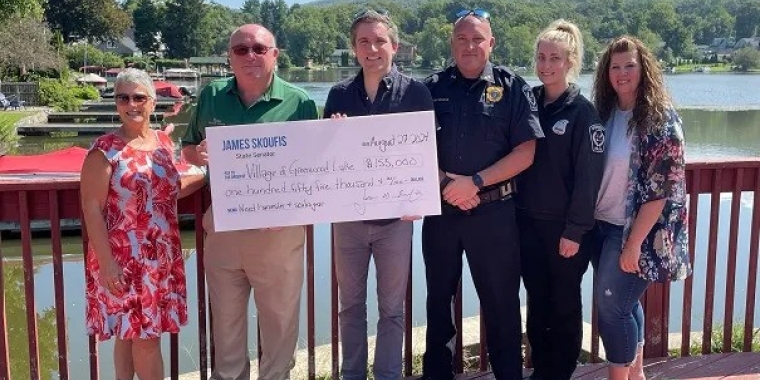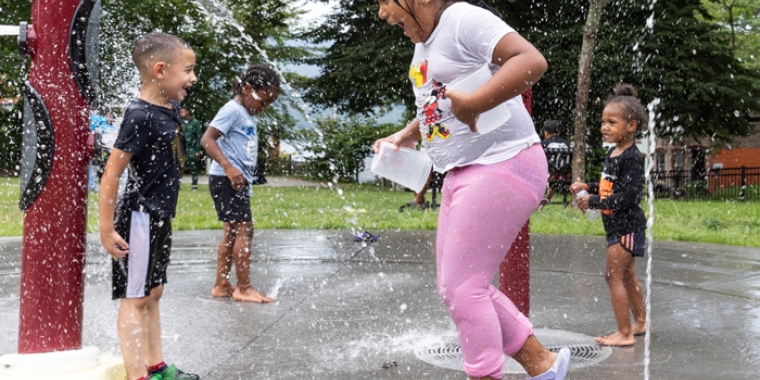
Skoufis Provides Grant for Enhancing Greenwood Lake’s Water Quality

On Tuesday, August 27, 2024 New York State Senator James Skoufis met with Greenwood Lake officials to provide them with a check in the amount of $155,000 – a grant that is part of the Community Resiliency, Economic Sustainability, and Technology Program, to support Greenwood Lake’s continuing effort to enhance the quality of the lake and combat invasive plant species.
“Thanks to Senator Skoufis’s diligent efforts, we have secured a generous grant of $155,000. This funding will be instrumental in enhancing the quality of our lake and public safety. Specifically, it will allow us to purchase a new small weed harvester to tackle the growth in the arms of the lake and SCUBA equipment for our police department,” remarked Mayor Tom Howley.
Skoufis was appointed to a small legislative group that developed the Climate Leadership Community Protection Act, the most aggressive state climate change plan in the entire nation.
In 2021, his nation-leading clean water testing legislation was signed into law, ensuring every community in New York knows what’s in their water. In 2020, James called on the State Department of Health to implement the Water Quality Council’s recommended PFAS levels, and a week later, the DOH Commissioner accepted the recommendations. He’s a strong supporter of preserving open space in the Hudson Valley and will always fight to protect our natural resources from over-development.
In December 2022, the New Jersey State Department of Environmental Protection (DEP) announced that the Greenwood Lake Commission would receive a $1 million grant for water-quality improvement projects. The DEP awarded grants to local government agencies, nonprofit groups, universities and others to fund projects that will improve water quality and reduce the impacts of nonpoint-source pollution from stormwater on publicly accessible lakes.
Weed harvesting uses hydro-raking technology, essentially an “excavator mounted to a floating barge,” according to the Greenwood Lake Commission. A rake attachment at the end of the excavator arm is used to scoop up plants along with their roots and deposit them on shore for removal to another location and proper disposal. The weed harvester that the Village will now acquire is smaller in size, to enable users to navigate more confined areas, especially the north arm of the lake, which is just north of the Route 17A bridge overpass.
Weed harvesting is part of a larger initiative to maintain or enhance lake quality that involves addressing harmful algal blooms, water chestnut growth, and other invasive plants that can rob the lake of oxygen and redirect it toward eutrophication, caused by an increase in runoff from fertilizer nutrients and other sources. Chemical applications, oxygenation techniques, and weed harvesting together have been used in recent years to slow down the accumulation of nutrients in the lake, to increase oxygen levels, and to enhance the navigable channels.
“When taken together these resources will significantly improve our community’s environment and safety measures support,” added Howley.



